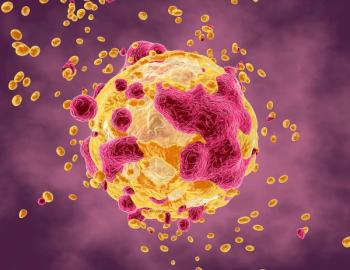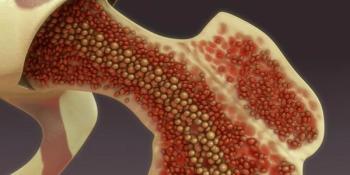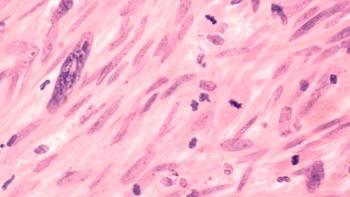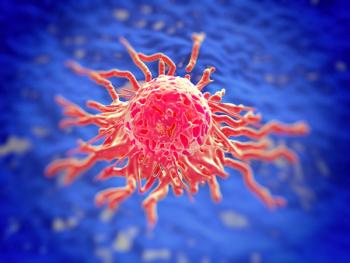
Oncology NEWS International
- Oncology NEWS International Vol 15 No 5
- Volume 15
- Issue 5
NCCN Soft-Tissue Extremity Sarcoma Guidelines Clarify Follow-up Schedule
Drs. Ephraim S. Casper, Memorial Sloan-Kettering Cancer Center, and George D. Demetri, Dana-Farber Cancer Institute, discussed the 2006 National Comprehensive Cancer Network (NCCN) guidelines on soft-tissue sarcomas at the NCCN 11th Annual Conference. The updated guidelines clarify the follow-up schedule for patients with extremity sarcoma.
HOLLYWOOD, FloridaDrs. Ephraim S. Casper, Memorial Sloan-Kettering Cancer Center, and George D. Demetri, Dana-Farber Cancer Institute, discussed the 2006 National Comprehensive Cancer Network (NCCN) guidelines on soft-tissue sarcomas at the NCCN 11th Annual Conference. The updated guidelines clarify the follow-up schedule for patients with extremity sarcoma.
In sarcomas of the extremities, local recurrence is seen in less than 20% of cases, and the lung is the first site of metastasis in more than 90% of cases. In retroperitoneal sarcoma, local recurrence is a major cause of morbidity, "so local control is a major focus of therapy," Dr. Casper said.
Adjuvant chemotherapy for stage I, T2a-b, N0, M0 low-grade extremity sarcomas is now classified as category 3 (formerly it had been category 2b), Dr. Casper said. Category 2B indicates nonuniform consensus but no major disagreement on the recommendation, whereas category 3 indicates substantial disagreement within the panel. "Some thought that it was indicated, whereas others thought it was contraindicated. Thus, its use is highly controversial," he commented.
Adjuvant chemotherapy in stage II and III disease also remains controversial, but less so than for stage I, Dr. Casper said, since such therapy is associated with improved disease-free survival, even if it is not associated with a statistically significant advantage in overall survival.
With unresectable or marginally resectable extremity soft-tissue sarcomas, the goal is to shrink the tumor enough to make it resectable. "Chemotherapy, radiotherapy, and chemoradiotherapy are all effective, and no one modality has yet been shown to be better than the others," Dr. Casper said.
Combination chemotherapy for soft-tissue sarcomas produces higher response rates than single-agent therapy, but needs to be used selectively, Dr. Casper said, since it is associated with greater morbidity than sequential single-agent therapy. "The goal of therapy in this setting generally is palliative," he said.
Other recommendations from the 2006 NCCN guidelines for extremity sarcomas include: Imaging of the primary mass for all lesions that have a reasonable chance of being malignant.
A follow-up schedule requiring chest imaging every 3 to 6 months for 2 to 3 years, then every 6 months for the next 2 years, then annually. "There certainly are late recurrences at 10 years or even after 10 years" Dr. Casper said.
Selective use of thoracotomy and VATS (video-assisted thoracic surgery), depending on the clinical presentation of metastatic disease.
Stronger consideration of radiotherapy if margins are positive and the tumor is not re-resectable.
Dr. Casper emphasized the importance of obtaining optimal clear margins and doing re-resection if necessary. He also pointed out that the goal of treatment is maximal function with minimal morbidity. "We rarely have to do amputations anymore, which is different from the situation 10 years ago," he said.
The guideline for retroperitoneal sarcomas recommends proceeding directly to surgery without biopsy if radiotherapy or chemotherapy is not being considered. The guideline also recommends considering chest imaging during follow-up.
Dr. Demetri discussed the special situation of GIST. He said that resectable primary tumors might not require biopsy if neoadjuvant therapy is not being considered. The goal is complete resection with negative margins and preservation of function. Biopsy should be done if neoadjuvant kinase inhibitor therapy is under consideration. Biopsy specimens should be carefully examined by expert pathologists if any question remains about the diagnosis.
FDA approval of the selective tyrosine kinase inhibitor imatinib (Gleevec) and the multitargeted kinase inhibitor sunitinib (Sutent) changed the management and prognosis of GIST. The guidelines note that advanced, unresectable, or metastatic GIST "has a very high likelihood of clinical benefit and positive response" to imatinib.
Dr. Demetri said that preoperative imatinib should be used in marginally resectable GIST (meaning that surgery would lead to undue risk of morbidity or functional deficit), unresectable GIST, or metastatic GIST. "With PET scans, you can tell quickly whether the tumor is responding, in 24 hours to 2 weeks," he said. "There can be a major benefit to the patient from stable disease, even if there is no anatomic change." He also warned that it can take many months for a lesion to shrink, so patience is warranted.
The guideline on follow-up care for GIST is changing. "After resistance to imatinib is documented, sunitinib may be tried, or surgery of focal lesions may be considered with continuation of imatinib dosing," Dr. Demetri said, noting that this recommendation will be included in the 2007 revised guidelines.
Finally, Dr. Demetri noted that overall survival is similar for patients who have a partial response to imatinib and those who have stable disease. "Stable disease is a response to imatinib," he said. "So our response definitions are going to have to change."
Articles in this issue
over 19 years ago
Genentech Files sBLA for Avastin for First-Line NSCLC Treatmentover 19 years ago
RFA Effective for Single, Small Hepatocellular Carcinomaover 19 years ago
New Imaging, ChemoRT Recommendations From NCCNover 19 years ago
Panitumumab Improves PFS in Advanced Colon Caover 19 years ago
Studies Question Watchful Waiting for Some Prostate Ca Ptsover 19 years ago
Growing Evidence Supports Stem Cell Hypothesis of Cancerover 19 years ago
FDA Approves New Every-3-Week Dosing for Aranespover 19 years ago
Telephone Often Delivers News of Breast Cancer Diagnosisover 19 years ago
IND Submitted for CYT-500Newsletter
Stay up to date on recent advances in the multidisciplinary approach to cancer.


















































































